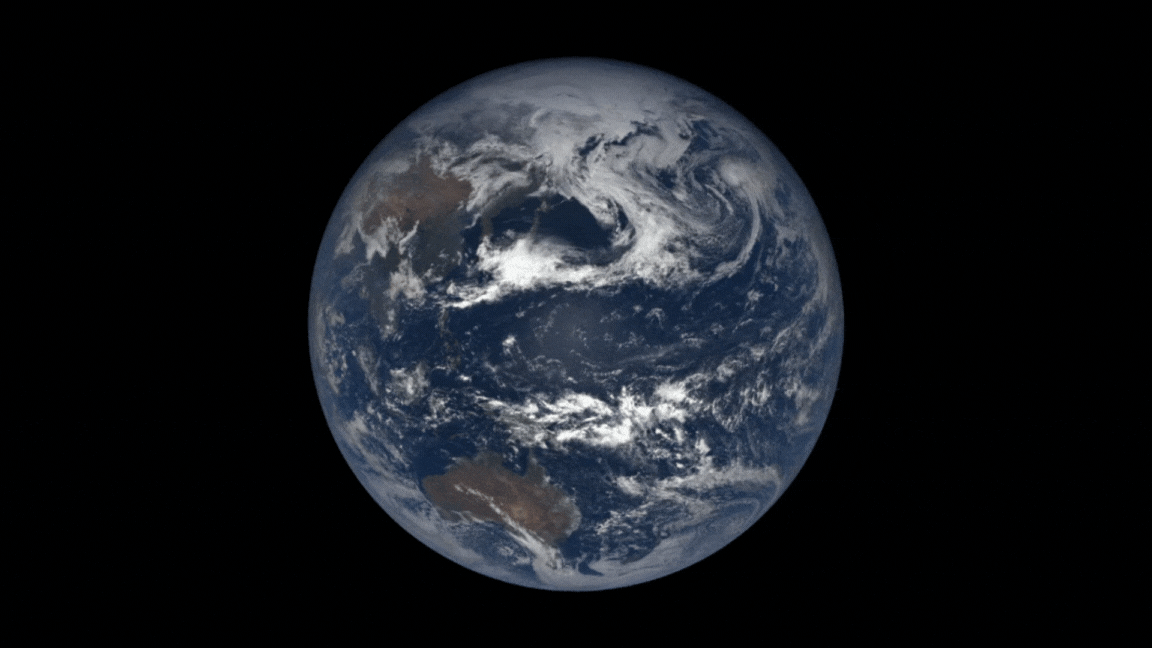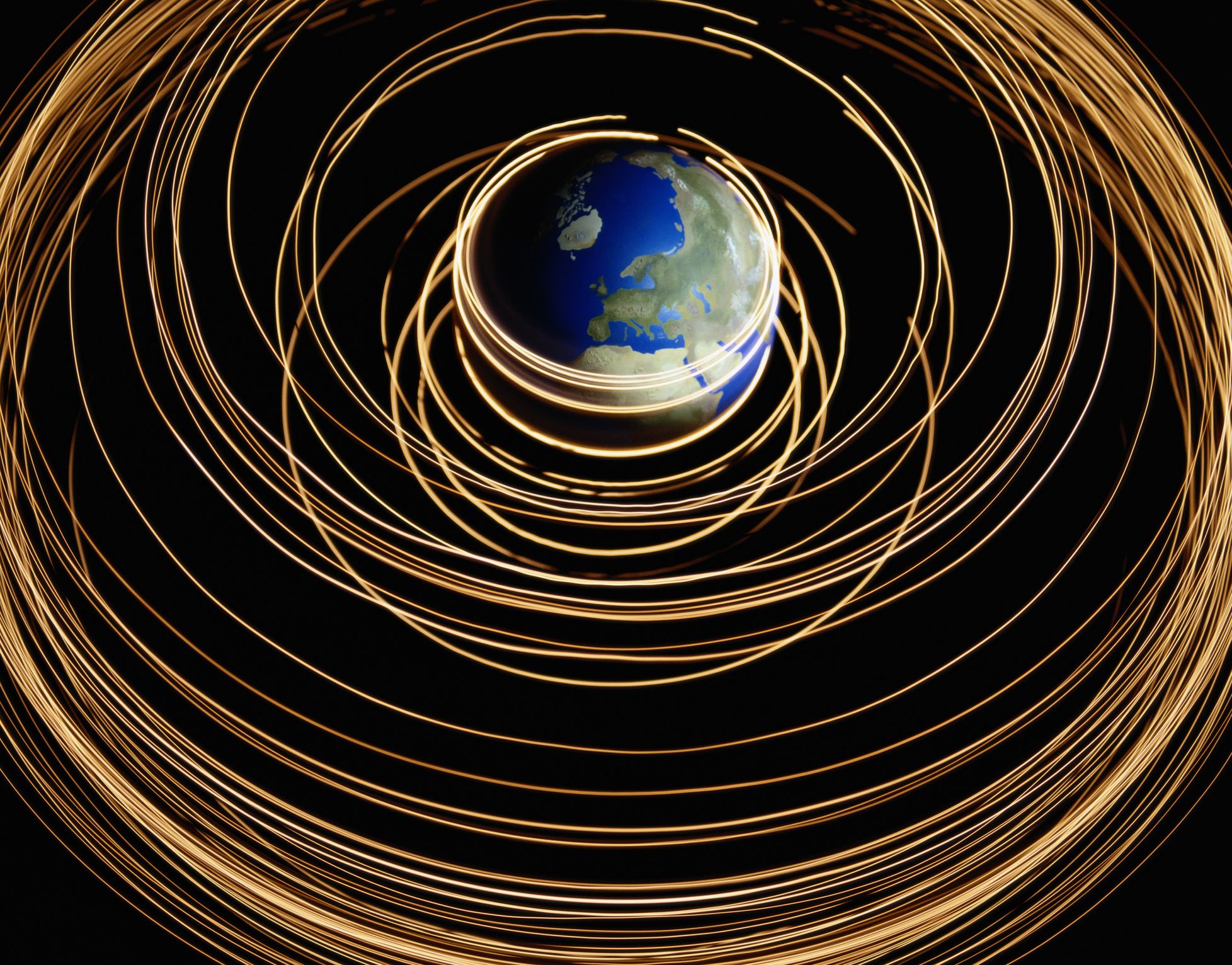The Earth spins at roughly 1,000 miles per hour (1,600 kilometers per hour) at the equator. This speed decreases towards the poles.
Earth’s rotation is a fundamental aspect of our planet’s dynamics. This rotation influences various natural phenomena, including day and night cycles and weather patterns. The speed of the Earth’s spin varies depending on the latitude. At the equator, the rotation speed is highest, but it slows down as you move towards the poles.
This spinning motion is crucial for maintaining the planet’s shape and stability. Understanding the Earth’s rotation helps scientists predict weather patterns and study the planet’s geology. The consistent spin also plays a significant role in global navigation systems.

Credit: www.space.com
Earth’s Rotation
The Earth spins on its axis, creating day and night. This rotation happens every 24 hours. But how fast does the Earth spin? Let’s dive into it.
Daily Spin
The Earth completes one full spin every 24 hours. This spinning motion is called rotation. At the equator, the Earth spins at about 1,000 miles per hour (1,600 kilometers per hour). This speed decreases as you move towards the poles.
| Location | Speed (mph) | Speed (km/h) |
|---|---|---|
| Equator | 1,000 | 1,600 |
| 45° Latitude | 707 | 1,136 |
| Poles | 0 | 0 |
Impact On Time
The Earth’s rotation affects timekeeping. We divide the day into 24 hours. This is because of the Earth’s 24-hour rotation period. Each hour represents 15 degrees of rotation (360 degrees/24 hours).
Time zones are based on the Earth’s rotation. The world is divided into 24 time zones. Each time zone is 15 degrees of longitude wide. This system helps us keep consistent time globally.
- Greenwich Mean Time (GMT) is the starting point.
- Time zones are either ahead or behind GMT.
Without the Earth’s rotation, days and nights would be very different. The rotation keeps our days and nights balanced.

Credit: calgary.rasc.ca
Measuring Speed
The Earth spins at a surprising speed. Understanding this speed helps us grasp our planet’s dynamics. Let’s explore the different speeds at various locations on Earth.
Equator Velocity
The Earth’s equator spins the fastest. The speed at the equator is about 1,670 kilometers per hour (1,040 miles per hour). This high speed is due to the equator’s larger circumference.
Imagine a person standing on the equator. They travel the Earth’s full circumference in 24 hours. This speed is necessary for the planet to complete one rotation daily.
Pole Differences
The poles spin much slower than the equator. Near the poles, the spinning speed is almost zero. This is because the poles are points, not lines. They don’t travel a large distance in one rotation.
Here’s a simple comparison in a table:
| Location | Speed (km/h) | Speed (mph) |
|---|---|---|
| Equator | 1,670 | 1,040 |
| North Pole | 0 | 0 |
| South Pole | 0 | 0 |
As you move from the equator to the poles, the speed decreases. This difference affects various natural phenomena. For example, it influences weather patterns and ocean currents.
Effects Of Rotation
The Earth’s rotation has several fascinating effects. These effects influence many aspects of our daily lives. The rotation impacts the weather, ocean currents, and even the paths of airplanes. Understanding these effects helps us appreciate our planet’s dynamics.
Coriolis Effect
The Coriolis Effect is a direct result of the Earth’s rotation. It causes moving objects to follow curved paths. This effect is most noticeable in large-scale movements like wind and ocean currents. For example, in the Northern Hemisphere, moving air turns to the right. In the Southern Hemisphere, it turns to the left. This deflection influences many natural phenomena.
Weather Patterns
Earth’s rotation also shapes weather patterns. The rotation causes the atmosphere to circulate in predictable ways. Trade winds and jet streams are direct results of this movement. These winds help distribute heat and moisture around the globe. This distribution creates diverse climates and weather systems.
Weather patterns are essential for life on Earth. They determine where rain falls and where deserts form. Without Earth’s rotation, our planet’s climate would be very different.

Credit: www.popularmechanics.com
Historical Perspectives
Understanding how fast the Earth spins has fascinated humans for centuries. People have offered various explanations throughout history. Let’s explore these perspectives.
Ancient Beliefs
In ancient times, people believed the Earth was the center of the universe. They thought the sky and stars revolved around us. This model is known as the geocentric model. Ancient Greeks like Ptolemy supported this view. They used complex calculations to explain planetary movements.
Other ancient cultures had different beliefs. For example, some Indian and Mayan astronomers suggested that the Earth might spin. But these ideas were not widely accepted. Most civilizations trusted the geocentric model for many centuries.
Modern Understanding
In the 16th century, everything changed. Nicolaus Copernicus proposed the heliocentric model. He suggested that the Earth and other planets orbit the Sun. This was a revolutionary idea. Later, Galileo Galilei used his telescope to support this theory. He observed the moons of Jupiter, showing not everything revolves around the Earth.
Today, we know the Earth spins on its axis. It rotates once every 24 hours. This rotation causes day and night. The Earth spins at a speed of about 1,000 miles per hour at the equator. Scientists use advanced tools like satellites and atomic clocks to measure this accurately.
Future Implications
Understanding how fast the Earth spins has significant future implications. The Earth’s rotation affects technology, the environment, and more. Let’s explore how.
Technological Advancements
Technological advancements could benefit from knowing the Earth’s spin rate. For instance, satellite navigation systems rely on precise calculations. These systems need to account for the Earth’s rotation speed.
Another example is communication technology. Faster internet and phone services depend on accurate timing. The Earth’s spin helps synchronize global networks. This ensures smooth and quick data transfer.
Space exploration also benefits. Rockets and spacecraft launch more efficiently with precise Earth rotation data. This allows for better mission planning and fuel efficiency.
Environmental Impact
The Earth’s spin affects the environment in various ways. Weather patterns are influenced by rotation speed. Predicting weather becomes more accurate with this knowledge.
Ocean currents are another example. They are driven by the Earth’s rotation. Understanding this helps in climate studies and marine biology.
Renewable energy sources like wind turbines also depend on Earth’s rotation. Wind patterns, influenced by spin speed, affect energy production.
| Aspect | Impact |
|---|---|
| Satellite Navigation | Improved accuracy |
| Communication Technology | Better synchronization |
| Space Exploration | Efficient launches |
| Weather Patterns | Accurate predictions |
| Ocean Currents | Climate studies |
| Renewable Energy | Optimized production |
Frequently Asked Questions
How Fast Does Earth Spin At The Equator?
The Earth spins at about 1,000 miles per hour at the equator. This speed varies slightly due to Earth’s shape.
Why Doesn’t The Spinning Earth Throw Us Off?
Earth’s gravity keeps us firmly grounded. The spinning motion generates centrifugal force, but gravity is much stronger.
Does Earth’s Spin Affect Day And Night?
Yes, Earth’s spin causes day and night. As the Earth rotates, different parts face the Sun, creating light and darkness.
How Does Earth’s Spin Speed Compare To Other Planets?
Earth’s spin speed is moderate compared to other planets. Jupiter spins the fastest, while Venus spins the slowest.
Conclusion
Understanding the Earth’s spin offers fascinating insights into our planet’s dynamics. This rotation affects day and night cycles, weather patterns, and navigation. By appreciating these details, we gain a deeper connection to our world. Stay curious and keep exploring the wonders of Earth.
Knowledge is a powerful tool for discovery.
